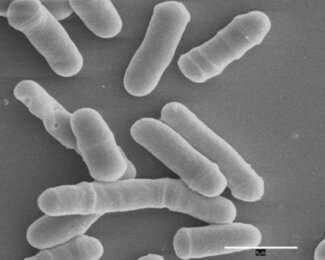How sex pheromones diversify: Lessons from yeast

Many organisms including insects, amphibians and yeasts use sex pheromones for attracting individuals of the opposite sex, but what happens to sex pheromones as new species emerge? New research publishing January 22 in the open-access journal PLOS Biology from Taisuke Seike and Hironori Niki at the National Institute of Genetics, Japan and Chikashi Shimoda at Osaka City University, Japan studies sex pheromones in the fission yeast Schizosaccharomyces pombe, revealing an "asymmetric" pheromone recognition system in which one pheromone operates extremely stringently whereas the other pheromone is free to undergo a certain degree of diversification, perhaps leading to a first step towards speciation.
New species may emerge when two populations can no longer interbreed, and this so-called reproductive isolation, which restricts gene flow between populations, is one of the key mechanisms of speciation. Mutational alterations of the pheromone system can affect the ability of males and female to recognize each other, resulting in reproductive isolation; more generally, however, loss of pheromone activity may result in extinction of an organism's lineage. The underlying mechanisms driving the diversification of pheromones within populations are not well understood.
The two sexes ("Plus" and "Minus") of S. pombe each secrete a pheromone ("P-pheromone" and "M-pheromone"), which binds to a corresponding receptor on cells of the opposite sex. By exploring similarities and differences between genes encoding the two pheromones and their receptors in 150 wild S. pombe strains of different geographical origins, the researchers found that the M-pheromone and its receptor are completely invariant, whereas the P-pheromone and its receptor are very diverse in the strains investigated. Interestingly, such asymmetric diversification of the two pheromones is also seen in the closely related fission yeast species S. octosporus.
The authors speculate that the "asymmetric" system in fission yeast might allow flexible adaptation to mutational changes of pheromones while maintaining stringent recognition of mating partners. Indeed, the authors' previous study in the fission yeast S. pombe demonstrated experimentally that several mutations in a pheromone and its corresponding receptor can lead to reproductive isolation, which in turn may give rise to a new species.
"Our findings contribute new insights into the evolutionary mechanisms underlying the diversification of pheromones. Organisms might have such systems for creating new versions of pheromones, allowing them to persist enough long in a population to evolve adaptations of receptors." said Dr. Seike. Before a mutant is completely lost, a second suppressor mutation may occur to recover the first defect. Thus, the coevolution of pheromones/receptors can proceed step-by-step.
More information: Seike T, Shimoda C, Niki H (2019) Asymmetric diversification of mating pheromones in fission yeast. PLoS Biol 17(1): e3000101. doi.org/10.1371/journal.pbio.3000101
Journal information: PLoS Biology
Provided by Public Library of Science



















